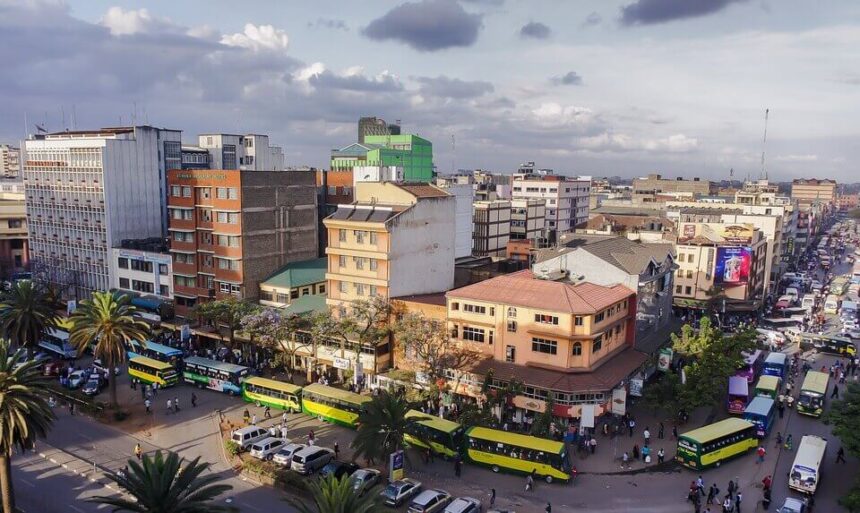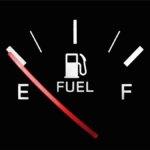Africa is one of the most diverse continents on earth. Based on Per Capita rankings, this post will show you the richest countries in Africa.
As you all know, Africa is home to some of the wealthiest countries in the world. The continent is rich in natural resources and has a vast population, leading to high GDP per capita.
However, despite this wealth, many countries are still mired in poverty. But first, let’s look at the list of the top 20 richest African countries based on GDP per capita.
The GDP/capita is measured using the International Monetary Fund (IMF) data. This info should give you a good idea of these countries’ relative economic stability and wealth.
In this article, we will answer the following questions:
- Which are the top 10 richest countries in Africa?
- Which are the top 10 most prosperous countries in Africa?
- Which is the wealthiest country in Africa in 2023?
- Which country is most developed in Africa?
The following are the wealthiest countries in Africa per capita. We will look at the top 10 richest and 20 most affluent countries.
Top 10 richest countries in Africa
Here is the list of the top 10 richest countries in Africa:
1. Seychelles
- GDP per capita: $26,120
- Population – 99,045
- Land Area – 460 km²
Seychelles is a small island in the Indian Ocean situated off East Africa. It is among the top 20 richest countries per capita and has the highest currency in Africa.
Seychelles has an impressive GDP per capita mainly because of its robust tourism industry, which contributes significantly to its GDP.
Tourism accounts for about 40% of the national GDP and roughly 70% of foreign currency earnings.
Historically, fishing formed the backbone of the economy, with tuna being the primary catch. However, in recent years, Seychelles has developed its tourism sector by expanding accommodation and facilities on the island.
2. Mauritius
- GDP per capita: $22,030
- Population – 1.3 million
- Area- 2030 km²
Mauritius is an island nation off the coast of Africa in the Indian Ocean. It is one of the most developing countries in Africa per capita.
They built the economy of Mauritius on sugarcane plantations, but today it has diversified into textiles, tourism, and banking. 80% of its tourists are from other African countries, France, and the United Kingdom.
The government is ballooning public debt to boost infrastructure to compete with its neighbor, the economic powerhouse of South Africa.
Mauritius also has a free port regime, meaning there are no taxes or tariffs on goods produced in Mauritius destined for export.
The exports for Mauritius mainly include clothing, sugar, and Guar Gum.
3. Botswana
- GDP per capita: $18,110
- Population – 2.4 million
- Area- 581,730 km²
Botswana is a landlocked country in Southern Africa. It is one of the wealthiest countries per capita on the continent.
The economy of Botswana has always been based on animal husbandry and has undergone several changes over the years.
The country’s diamond and beef exports have greatly helped Botswana develop its economy.
Botswana is one of Africa’s largest producers of diamonds, giving it the third most significant share in dollar value among African nations after South Africa and Angola. Diamonds account for about 50% of the country’s exports.
Mining accounts for about 12% of GDP, and diamonds account for 80%. One in every four households in Botswana has at least one diamond ring, earring, or pendant.
In the past decade, however, the diamond market has been saturated, leading to a severe economic downturn and political turmoil.
However, mining companies have begun diversifying into other areas, such as copper and nickel, to help support the economy in recent years.
4. Gabon
- GDP per capita: $16,240.
- Population – 2.3 million.
- Area- 257,670 km².
Gabon is located on the west coast of Africa in central Africa, bordered by Equatorial Guinea, Cameroon, the Republic of Congo, and the Gulf of Guinea. It is one of the top 20 richest countries in Africa per capita.
Gabon has a lot of resources, including oil, timber, manganese mining, and uranium ore, making it one of Africa’s wealthiest countries.
However, Gabon is facing a severe economic crisis, resulting in the country’s oil production being cut by half.
The GDP growth rate in Gabon is meager, and inflation is high; it is currently -2.7%.
5. Madagascar
- GDP per capita: 13,720.
- Population – 28.7 million.
- Area- 581,795 km².
Madagascar is an island nation located off the coast of East Africa in the Indian Ocean. One of Africa’s poorest countries and one of Africa’s top 20 richest countries per capita.
Madagascar’s economy mainly relies on agriculture, which accounts for about 40% of the country’s GDP.
It is one of the most biodiverse countries globally, with approximately 5,000 plants, 89 types of primates, 350 bird species, and 60 mammal species found nowhere else.
However, many of Madagascar’s natural resources are being exploited by foreign countries without the benefit of revenue sharing or royalties.
6. Egypt
- GDP per capita: $13,080
- PopulationPopulation – 102.3 million
- Area- 995,450 km²
Egypt is a country in North Africa bordered by the Mediterranean Sea to the north, Israel and the Gaza Strip to the northeast, the Gulf of Aqaba to the east, Sudan to the south, and Libya to the west. It is one of Africa’s top 20 richest countries per capita, with a strong African currency.
Egypt has an ancient history that dates back thousands of years. Because of this, it is widely considered to be the foundation of human civilization, which has helped Egyptians become one of the top 5 populous countries in Africa.
Egypt mainly relies on agriculture, media production, construction, tourism, and transportation. About 50% of Egyptians are employed in agriculture.
However, its agricultural sector only contributes 23% to the GDP.
Agriculture accounts for just 16% of GDP and employs 25% of the workforce.
7. South Africa
- GDP per capita: $12,440
- Population – 60.3 million
- Area- 1,213,090 km²
South Africa’s economy mainly relies on transport equipment, processed minerals, chemicals, textiles, and food products, which account for about half of its GDP.
The industrial sector makes up the most significant part of GDP, accounting for over 35%, and minerals, mainly gold, diamonds, and coal, account for 90% of exports.
The country has a lot of resources, such as iron ore and chrome, which makes it one of Africa’s wealthiest countries. However, these resources have not been used efficiently, and the economy remains in flux.
Still, the economy is doing well, with an annual GDP growth rate of 3%, one of the highest in Africa.
Agriculture accounts for about 7% of the GDP and employed 22.8% of the workforce as of 2014.
South African mines produce a variety of minerals such as gold, diamonds, coal, vanadium, manganese, iron ore, copper, and tin which make up more than half of South Africa’s exports or 4% of world trade in minerals and metals.
However, South Africa’s economy faces severe challenges, such as rapid population growth, further poverty, and unemployment.
8. Algeria
- GDP per capita: $11,430
- Population – 44.9 million
- Area- 2,381,740 km²
Algeria is one of the wealthiest countries in Africa.
Algeria significantly influences African affairs despite having a relatively small population of about 44.9 million, ranking 34th.
Algeria’s economy mainly relies on hydrocarbons and manufacturing, which account for about 60% of the GDP.
Hydrocarbons contribute more than 95% to exports and 75% to government revenue. Manufacturing contributed less than one-third of the GDP and employed about 16% of the workforce in 2014.
9. Tunisia
- GDP per capita:$10,590
- Population – 12 million
- Area- 155,360 km²
Despite having a relatively small population of about 12 million people, Tunisia also significantly influences African affairs. It has one of the highest currencies in Africa.
Tunisian exports mainly include clothing and textiles, chemicals, semi-finished goods, electrical equipment, and transportation equipment. Tunisia’s land resources are limited because of the aridity of the Sahara desert.
However, Tunisia has human resource potential, making it attractive to foreign investors such as Germany and Italy.
Tunisia’s economy mainly relies on tourism, manufacturing, and mining, which account for about 15% of the GDP.
Tunisia’s economy has been doing well because its economic policies have effectively created a stable financial environment encouraging foreign investments.
In 2014, Tunisia depended less on foreign assistance and reduced it to $183 million from previous years’ close to $700 million.
10. Namibia
- GDP per capita: $9,730
- Population – 2.3 million
- Area- 824,292 km²
One of the richest countries in Africa in Namibia.
The Namibian economy mainly relies on mining, agriculture, manufacturing, and tourism, which account for more than half of its GDP.
Mining accounts for about 30% of GDP, while Agriculture contributes around 12%.
Namibian agriculture mainly produces beef, lamb and mutton, dairy products, tobacco, and barley.
The Namibian economy is stable, with a steady growth rate above 4%, contributing to its high GDP per capita.
#11-20 Wealthiest Countries in Africa
11. Morocco
- GDP per capita: $8,030
- Population – 37.5 million.
- Area- 446,300 km².
Morocco is one of Africa’s best economies mainly because it has a diversified economy driven by the export of agriculture, mining and manufacturing products.
Morocco significantly influences African affairs because of its proximity to Europe, especially Spain.
Crude oil accounts for about 60% of the energy produced in Morocco, while other sources are also imported from countries such as Algeria, France, and Russia.
The country depends on phosphate production, which provides over 40% of its exports.
Morocco’s economy mainly relies on agriculture and tourism, which account for about 20% of the GDP and employed 36% and 10.2% of the workforce in 2014.
12. Angola
- GDP per capita:$7,790
- Population – 24.3 million
- Area- 1,246,700 km²
Angola is one of the largest oil producers in Africa because it has abundant mineral resources, which are considered essential contributors to its economy.
The main exports from Angola are diamonds, petroleum products, and cocoa.
Angola’s economy mainly relies on oil extraction, agriculture, construction, and manufacturing, accounting for about 70% of the GDP.
Most Angolans are employed in agricultural activities, contributing to about 40% of the country’s GDP. Although Angola is one of Africa’s largest oil producers, it still struggles to meet its basic needs.
13. Ghana
- GDP per capita:$7,210
- Population – 25.9 million
- Area- 238,533 km²
Ghana’s economy mainly relies on producing and exporting gold and cocoa, which account for over half of its total exports.
The country’s small manufacturing industry produces essential consumer goods such as cigarettes and food products such as canned fish and processed meat.
Ghana has a market-based economy that encourages foreign investments. Ghana’s economic growth has slowed since the early 2000s because it used its resources for most of its development projects, which caused inflation rates to increase to 10%.
14. Ivory Coast
- GDP per capita:$7,100
- Population – 24.5 million
- Area- 322,463 km²
The economy of the Ivory Coast mainly relies on agriculture, contributing to more than half of its GDP.
The main exports are cocoa beans, petroleum products, and palm oil. Like other African countries, Ivory Coast relies on foreign assistance to help its economy recover from civil wars.
The country’s growing economy is projected to expand by 8.2% in 2015 while maintaining an inflation rate of around 10%.
The Ivory Coast’s economic growth has slowed since the early 2000s because of its inadequate infrastructure, which has hindered foreign investment.
15. Djibouti
- GDP per capita: $7,020
- Population – 872,000
- Area- 23,200 km²
Djibouti has a small economy based on service activities connected with the country’s strategic location and status as a free trade zone.
The country mainly serves as a port of call for other countries in East Africa, which is considered one of the major trading partners in the region.
Since the country has one of the highest military expenditures in Africa, most of its income comes from foreign assistance, although its economy has grown significantly since 1995.
Djibouti is also home to over 100,000 Somali refugees who fled their civil war, which caused the government to rely on foreign assistance for more than 60% of its total expenditure.
16. Nigeria
- GDP per capita:$5,280
- Population- 206.1 million
- Area- 910,770 km²
Nigeria’s economy is considered the largest in Africa, with over $500 billion of natural resources; it mainly relies on its petroleum industry, which accounts for about 20% of its GDP.
The economy of Nigeria has grown at an average of 6% annually in the past decade. This growth is because it has been developing its infrastructure, leading to development of other industries, such as telecommunications and electricity.
Nigeria’s economy is affected by corruption, raising its inflation rate to 10%. In addition, Nigeria has a growing population that requires more resources which has caused deforestation and pollution of its soil, air, and water.
17. Kenya
- GDP per capita: $5,270
- Population – 53.7 million
- Area- 569,140 km²
Kenya’s economy mainly relies on its agricultural industry, which comes from its fertile soil and favorable climate that helps produce coffee, tea, sugarcane, maize, potatoes, and livestock.
One of Kenya’s main agricultural exports is cut flowers which account for about one-fourth of the country’s total exports.
The service sector has been growing in Kenya because of increased tourism, bringing more capital.
Kenya’s economy also helps its industrial sector by exporting manufactured goods such as processed food, cement, chemicals, and steel.
Despite being a leading economic power in East Africa, recent political events have created an unstable economy, leading to up to 10% inflation rates.
In addition to the above, Kenya has faced extreme weather conditions that have challenged its agricultural industry, which caused food shortages and inflation rates to increase exponentially.
18. Republic Of The Congo
- GDP per capita:$4,170
- Population -5.7 million
- Area- 341,500 km²
The Democratic Republic of Congo’s low-income economy relies on its natural resources to supply most of its exports while generating revenue for its social services and infrastructure.
However, the country has been experiencing a significant decline in most economic sectors because of poor management and corruption.
The DRC is rich in natural resources such as cobalt, copper, niobium, industrial and gem diamonds, gold, silver, zinc, manganese ore, uranium, and petroleum, which account for at least 70% of their total exports.
The mining industry has been declining because of the high corruption levels and political instability that militias and criminal cartels may also cause.
19. Sudan
- GDP per capita: $4,080
- Population -45.3 million
- Area- 1,765,048 km²
Sudan is known for its diversity of natural resources, such as petroleum and mining, which account for more than 80% of its exports.
In addition to being a leading oil producer in Africa, Sudan is located in the fifth-largest oil-producing region, known as the “Gulf of Guinea.”
Other essential industries to Sudan’s economy are cotton, livestock, wheat, gold, and agricultural resources, which provide jobs for more than 40% of its working PopulationPopulation.
However, despite being rich in natural resources, Sudan has been experiencing an economic downturn because of political conflicts and civil wars.
20. Sao Tome And Principe
- GDP per capita: $3,930
- Population – 225,012
- Area – 960 km²
Last on our list of wealthiest countries in Africa is Sao Tome And Principe. This small country in the Gulf of Guinea relies on its agricultural industry, employing more than 50% of its working PopulationPopulation.
In addition to being a major exporter of bananas, palm oil, and cocoa beans, Sao Tome And Principe also export natural rubber, copra, and coffee.
The country’s economy has been affected by the decline in its agricultural industry because of poor soil fertility caused by excessive rain, which decreases crop production.
Another factor affecting Sao Tome And Principe’s economy is its dependence on foreign food imports.
Economic dependency on other countries that use Sao Tome And Principe as a refueling station and the fluctuation of oil prices affect their fuel supplies.
Table of Richest Countries in Africa
Here is a table with all the top 20 richest countries in Africa:
| Rank | Country | GDP Per Capita |
| 1 | Seychelles | $26,120 |
| 2 | Mauritius | $22,030 |
| 3 | Botswana | 18,110 |
| 4 | Gabon | $16,240 |
| 5 | Madagascar | $13,720 |
| 6 | Egypt | 13,080 |
| 7 | South Africa | $12,440 |
| 8 | Algeria | $11,430 |
| 9 | Tunisia | $10,590 |
| 10 | Namibia | $9,540 |
| 11 | Morocco | $8,030 |
| 12 | Angola | $6,880 |
| 13 | Ghana | $5,970 |
| 14 | Ivory Coast | $5,640 |
| 15 | Djibouti | $5,300 |
| 16 | Nigeria | $5,280 |
| 17 | Kenya | $5,270 |
| 18 | Republic Of The Congo | $4,170 |
| 19 | Sudan | $4,080 |
| 20 | Sao Tome And Principe | $3,930 |
Source: World Population Review
These African countries should take advantage of their natural resources to improve their economy and create a more stable economy to support their population.
Only then these 20 richest countries in Africa per capita can represent a good and reliable source of income for their citizens.







